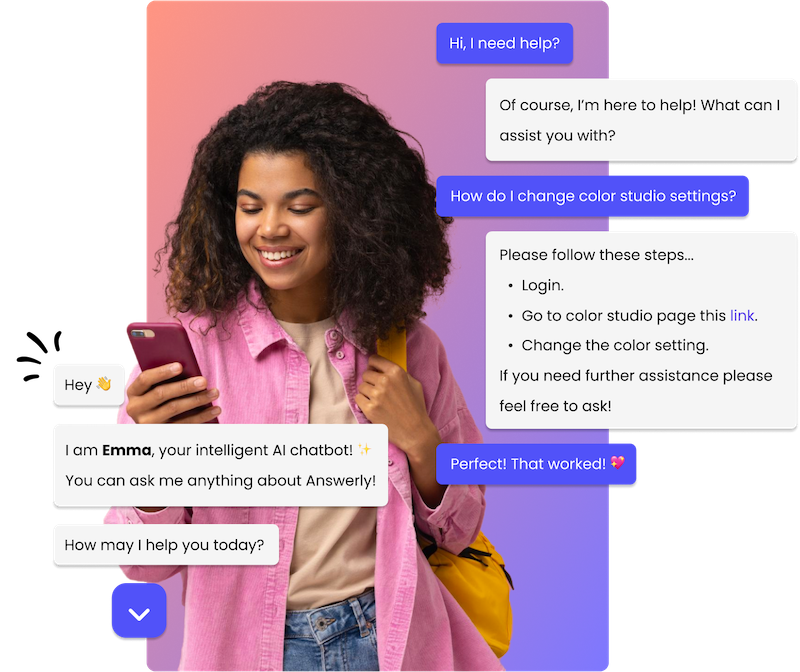Like a weary traveler in a foreign land, you yearn for a companion who can understand your needs and offer assistance effortlessly.
Enter AI chatbot conversational interfaces - the virtual guides that aim to enhance your user experience. But how can you ensure that these interfaces truly understand and cater to your unique requirements?
In this discussion, we will explore the benefits of conversational user interfaces, delve into the best practices for AI chatbot conversations, uncover strategies for designing natural language interactions, and reveal techniques for optimizing conversational flows and feedback.
Prepare to embark on a journey towards a more personalized and satisfying user experience - one that is seamlessly guided by the power of AI.
Benefits of Conversational User Interface
Conversational user interfaces offer numerous benefits, making them a popular choice for businesses seeking to enhance user engagement and improve customer satisfaction.
One of the key advantages is their ability to provide a more personalized experience. By using natural language processing and machine learning algorithms, these interfaces can understand user inputs and tailor responses accordingly. This level of personalization not only helps users feel heard and understood, but also creates a sense of trust and loyalty towards the business.
Another benefit of conversational user interfaces is their round-the-clock availability. Unlike human agents, chatbots and virtual assistants can be available 24/7, providing instant support and assistance to users at any time. This not only improves customer satisfaction by reducing response times, but also allows businesses to extend their reach to a global audience without having to worry about time zone limitations.
Conversational user interfaces can handle multiple conversations simultaneously, ensuring quick and efficient resolution of user queries. This scalability is particularly useful for businesses that receive a high volume of customer inquiries and need to provide prompt responses.
Conversational user interfaces can also collect valuable data and insights about customer preferences, behaviors, and pain points. This data can be used to improve products and services, personalize marketing strategies, and enhance overall customer experience.
Best Practices for AI Chatbot Conversations
To ensure effective and engaging AI chatbot conversations, follow these best practices:
- Personalize the conversation: Tailor your chatbot's responses to the individual user by using their name, remembering their preferences, and providing relevant recommendations. This creates a more personalized and human-like experience, making the user feel valued and understood.
- Use concise and clear language: Keep your responses short and to the point. Avoid using complex jargon or technical terms that may confuse the user. Use simple and conversational language that's easy to understand. Remember, the goal is to provide helpful information and guidance, not to showcase the chatbot's vocabulary.
- Incorporate natural language processing: Implement natural language processing (NLP) techniques to enable your chatbot to understand and interpret user queries accurately. This allows the chatbot to respond intelligently and contextually, enhancing the conversational experience. NLP also enables the chatbot to handle variations in user input and understand different phrasings of the same question.
Designing Natural Language Interactions
When designing natural language interactions for AI chatbots, focus on creating seamless and intuitive communication experiences. Users should feel as if they're having a conversation with a real person, rather than interacting with a machine. To achieve this, consider the following best practices.
Make sure that your chatbot understands and interprets user inputs accurately. It should be able to comprehend different variations of a question or request, and respond appropriately. Use natural language processing algorithms to improve the chatbot's ability to understand context and intent.
Aim to make the conversation flow smoothly. Avoid abrupt transitions or abrupt changes in tone. Instead, design the chatbot's responses to be coherent and relevant to the user's previous input. Use prompts or suggestions to guide users and keep the conversation on track.
Incorporate personality into your chatbot's responses. This can help create a more engaging and enjoyable experience for users. Consider the tone, language, and style of the chatbot's responses, and make sure they align with your brand's voice and values.
Regularly test and gather feedback from users to identify areas for improvement. Analyze user interactions and adjust the chatbot's responses accordingly. Continuously refining and optimizing the natural language interactions will help provide users with a more satisfying and effective chatbot experience.
Strategies for Personalized User Experiences
To create personalized user experiences, implement strategies that enhance the chatbot's ability to understand individual preferences and tailor responses accordingly. By employing these strategies, you can ensure that your chatbot delivers a more personalized and engaging experience for each user.
Here are three effective strategies to consider:
- User Profiling: Collect and analyze user data to create detailed profiles. This includes information such as past interactions, preferences, and demographics. By understanding each user's unique characteristics, the chatbot can provide more relevant and personalized responses.
- Context Awareness: Enable the chatbot to remember previous conversations and user preferences. This allows the chatbot to maintain continuity and provide more personalized recommendations or suggestions based on the user's history.
- Recommendation Engine: Incorporate a recommendation engine that suggests relevant content, products, or services based on user preferences and behavior. This helps to personalize the user experience by offering tailored suggestions that align with their needs and interests.
Optimizing Conversational Flows and Feedback
How can you optimize conversational flows and feedback to enhance the user experience with your AI chatbot?
One of the key ways to optimize conversational flows is by ensuring that your chatbot's responses are concise and to the point. Long, convoluted responses can confuse users and make the conversation feel overwhelming. It's important to break down complex information into smaller, digestible chunks that are easier for users to understand.
Another way to optimize conversational flows is by using natural language processing (NLP) to anticipate user needs and provide relevant responses. By analyzing user input, you can train your chatbot to recognize patterns and provide accurate and helpful information. This can help streamline the conversation and make it more efficient.
Feedback is also crucial in enhancing the user experience. It's important to provide clear and specific feedback to users, especially when they make errors or request information that the chatbot can't provide. Instead of generic error messages, try to provide helpful suggestions or alternative options. This won't only improve the user experience but also help users feel supported and understood.
Frequently Asked Questions
How Can Conversational User Interfaces Benefit Businesses in Terms of Customer Satisfaction and Engagement?
Conversational user interfaces can greatly benefit businesses. By providing a seamless and interactive experience, they enhance customer satisfaction and engagement. Customers feel heard and understood, resulting in increased loyalty and positive brand perception.
What Are Some Common Mistakes to Avoid When Designing AI Chatbot Conversations?
When designing AI chatbot conversations, some common mistakes to avoid include using overly technical language, failing to provide clear instructions, and neglecting to personalize the interaction with the user.
How Can Natural Language Interactions Be Designed to Ensure a Smooth and Intuitive User Experience?
To ensure a smooth and intuitive user experience, design natural language interactions that are clear and concise. Avoid using jargon or complex language. Provide helpful prompts and suggestions to guide users through the conversation.
What Strategies Can Be Employed to Personalize the User Experience With AI Chatbots?
To personalize the user experience with AI chatbots, you can employ various strategies. These may include analyzing user data, utilizing machine learning algorithms, and offering tailored recommendations based on individual preferences and past interactions.
How Can Conversational Flows and Feedback Be Optimized to Enhance User Engagement and Conversion Rates?
To optimize conversational flows and feedback, focus on engaging users and increasing conversion rates. Use clear and concise language, provide prompt and relevant responses, and gather feedback to continuously improve the chatbot's performance.

